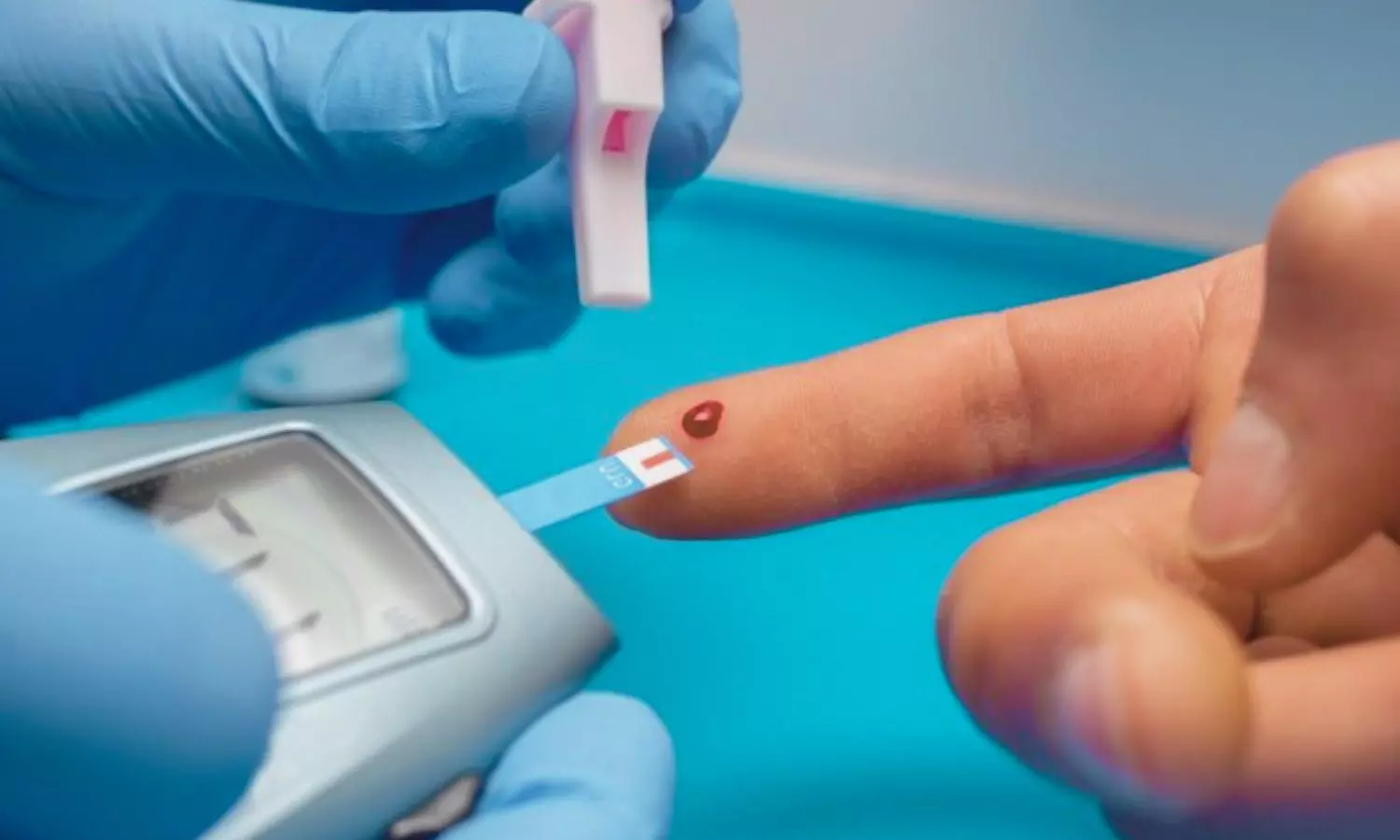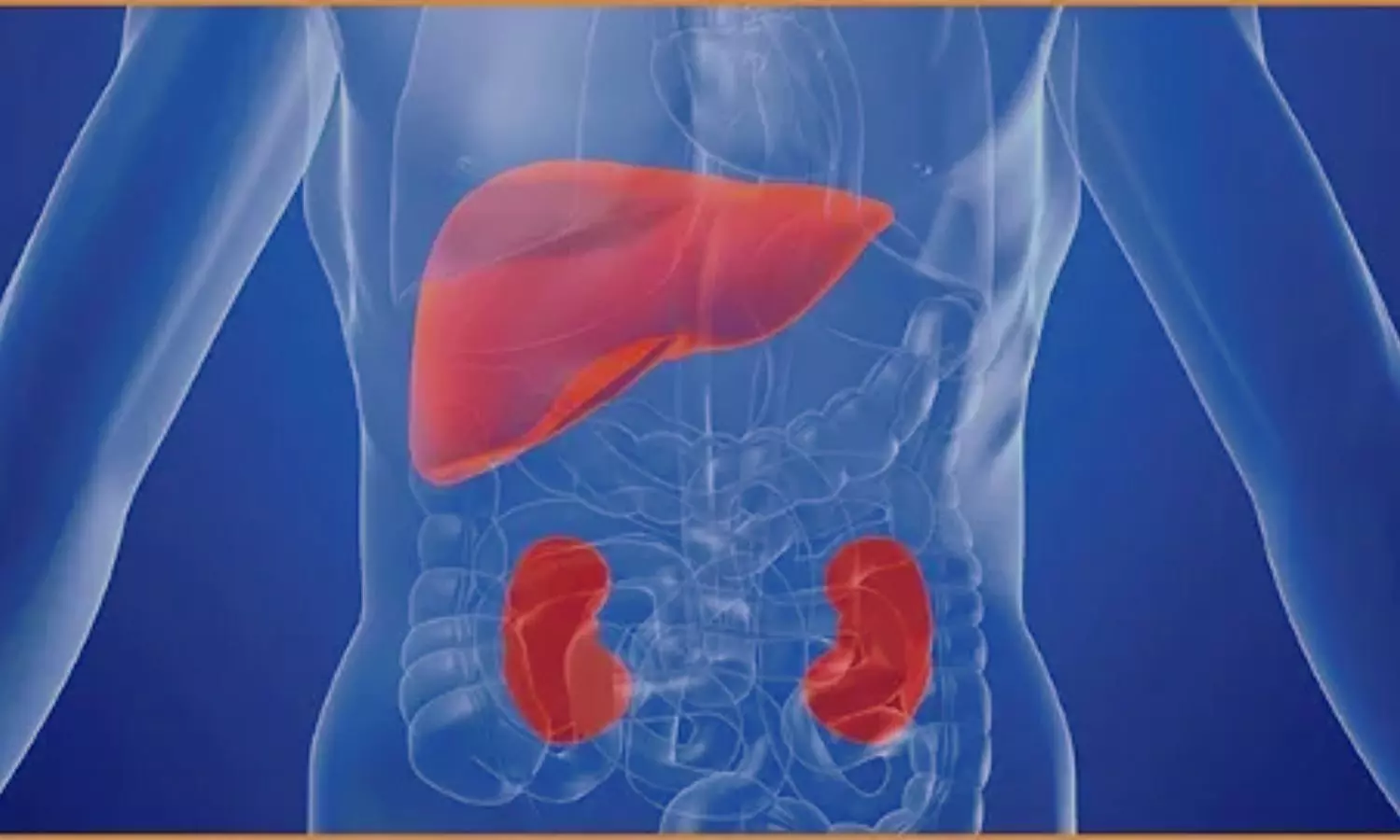Minutes instead of months: Algorithm rapidly identifies cell types to match patients with effective cancer therapies
Powered by WPeMatico
Powered by WPeMatico
Powered by WPeMatico
Powered by WPeMatico
Powered by WPeMatico

Telangana: Natco Pharma has appointed Yarramshetty Krishna Rao as Senior Vice President – Operations
at Mekaguda of the Company.
Yarramshetty Krishna Rao has overall 33 years of
experience in the leading Indian Bulk Drug/API
Manufacturing Industries, with 20 years of experience as Unit
Head. Prior to joining Natco, he served at Dr. Reddy’s Laboratories
Limited, Hyderabad, as Senior Director/Site Head – API
manufacturing unit.
This appointment follows a series of senior leadership changes Natco Pharma unveiled last month, effective from June 1, 2025. As part of its organizational strengthening across various verticals, the company named Dilip Manikchand Dhore as Vice President – Corporate Quality Assurance, and Amber Roy as Associate Vice President – Distribution.
Additionally, Addagada Veeranarayana and Parupalli Sreenivasa Rao were appointed Associate Vice Presidents – Operations, while Kurada Venkata Maruti Ramchander was designated as Associate Vice President – Regulatory Affairs.
Earlier in April, Natco Pharma also announced the superannuation of two key executives: Dr. Ramesh Dandala, Executive Vice President – Technology Transfer, Intellectual Property Rights & Regulatory Affairs (API), and Tummala Venkata Rao, Vice President – Production.
NATCO Pharma Limited, headquartered at Hyderabad, India, develops, manufactures and distributes generic and branded pharmaceuticals, specialty pharmaceuticals, active pharmaceutical ingredients and crop protection products. The Company is a R&D oriented, and a science driven, leading Oncology player in the targeted therapies of domestic market and focuses on limited competition molecule in the US. The Company has 9 manufacturing sites and 2 R&D facilities in India. The Company’s manufacturing facilities are approved by several leading regulatory authorities like US FDA, Brazil ANVISA, Health Canada, WHO and others catering to 50+ global markets.
Read also: Natco Pharma Tummala Venkata Rao supperannuates as Vice President – Production
Powered by WPeMatico

Chennai: In a significant
move aimed at addressing the illegal dumping of bio-medical waste, Tamil Nadu
Governor R N Ravi has approved an amendment to the Goondas Act, 1982, enabling
authorities to detain individuals involved in such activities under the stringent provisions of the act.
The amendment, passed in
the State Assembly in April 2025, comes in response to recurring incidents of
medical waste being dumped in Tamil Nadu’s border districts by institutions
from neighbouring Kerala.
According to Deccan Herald, the government amended the Tamil Nadu Prevention of Dangerous
Activities of Bootleggers, Cyber Law Offenders, Drug Offenders, Forest
Offenders, Goondas, Immoral Traffic Offenders, Sand Offenders, Sexual
Offenders, Slum-Grabbers and Video Pirates Act, 1982, aligning it with the
Bio-Medical Waste Management Rules, 2016. The state government had argued that
such changes were imperative due to the serious health and environmental
hazards posed by the illegal disposal of bio-medical waste.
According to the amended
provisions, anyone found disposing of or attempting to dispose of bio-medical
waste in violation of the Bio-Medical Waste Management Rules, 2016 — an offence
punishable under the Environment Protection Act, 1986 — can now be detained
under the Goondas Act.
“…for the expression
“bootleggers, cyber law offenders, drug offenders”, the expression
‘bio-medical waste offenders, bootleggers, cyber law offenders, drug
offenders, economic-offenders” shall be substituted,” the bill said.
The backdrop to this
legislative action includes repeated instances of biomedical waste being
transported from Kerala and dumped in Tamil Nadu’s border districts such as
Theni, Kanyakumari, Tenkasi, and Tirunelveli. Despite complaints by landowners
and local residents, the practice has continued, sparking widespread public
outrage. Residents allege that lorries arriving from Kerala, ostensibly to
carry loads from a nearby paper mill, have been clandestinely unloading
biomedical and other hazardous waste in vacant lands across these villages.
One of the most serious
cases occurred on December 15, 2024, when medical and plastic waste from the
Regional Cancer Centre (RCC) in Thiruvananthapuram was found dumped in
Kodaganallur and Palavoor villages in Tirunelveli district. These acts of
dumping were carried out on privately owned open lands, further creating hazards
for the locals.
Powered by WPeMatico

Kakinada: In a case of alleged medical negligence, a newborn baby died shortly after birth at the Tallarevu Community Health Centre in Kakinada district, after a sanitary worker on duty reportedly handled the delivery of a pregnant woman.
Although the hospital administration denied the allegation and claimed that the sanitary worker is a trained birth attendant, the incident sparked protests by the family, who accused the doctors and the hospital of medical negligence.
According to doctors, the baby died due to meconium aspiration syndrome – a condition where a newborn inhales a mixture of amniotic fluid and stool during or shortly after birth, leading to serious breathing problems.
Also read- UP doctor arrested for alleged negligence in death of woman and newborn
TOI reported that the incident took place in the early hours of Saturday. The 22-year-old mother was admitted to the hospital on Friday morning and was under constant observation. According to the family, she developed labour pains early Saturday, and with no doctor immediately available, a sanitary worker on duty handled the delivery. Relatives alleged that the sanitary worker performed the delivery, which they believe led to the baby’s death.
However, health officials denied the claim, stating that the sanitary worker was a trained birth attendant and did not carry out the delivery. Instead, they said she helped only after the baby was born suddenly and the umbilical cord began to stretch excessively.
Dr Swapna, the district coordinator for health services, clarified that gynaecologists were present at the hospital until 2 am. At the time of the incident, a paediatrician, two staff nurses, and the sanitary worker were available. She said the sanitary worker clamped the umbilical cord and gave oxygen to the baby before informing the nurse and doctor.
Doctors explained that the baby’s condition worsened quickly due to the respiratory problem. The duty doctor advised the family to take the newborn to the Government General Hospital. Sadly, the baby died on the way.
Following the death, angry family members staged a protest at the health centre, accusing the hospital staff of negligence. The woman’s condition is reported to be stable.
An official inquiry has been ordered into the incident, and authorities have promised strict action if any negligence is found.
Powered by WPeMatico

South Korea: A large-scale cohort study published in JAMA Network Open highlights a strong connection between income levels and the risk of severe hypoglycemia in individuals with type 2 diabetes. Conducted by Dr. Misook Kim from the Division of Endocrinology and Metabolism, Seoul St Mary’s Hospital, The Catholic University of Korea, and colleagues, the research emphasizes the pressing need to address socioeconomic disparities to enhance diabetes care and reduce adverse outcomes.
The study analyzed data from over 1.8 million adults with type 2 diabetes in South Korea, sourced from the Korean National Health Information Database (NHID), and included a comparative sensitivity analysis of more than 17,000 participants from the UK Biobank (UKBB). All individuals were aged between 40 and 70 years and had valid income and health information.
Researchers explored how both absolute income levels and changes in income over time influenced the likelihood of experiencing severe hypoglycemia, an acute and dangerous drop in blood sugar requiring medical intervention.
The study led to the following findings:
The authors emphasized that socioeconomic status should be considered a critical component in diabetes risk assessment and management strategies. They advocate for policy-level interventions and community-based programs aimed at improving financial stability for low-income individuals with diabetes.
“The extensive study highlights the influence of economic factors on health outcomes in type 2 diabetes. Supporting income mobility and minimizing financial hardship could be pivotal steps in reducing the burden of severe hypoglycemia and improving overall diabetes care,” the authors concluded.
Reference:
Kim M, Han K, Lee K, et al. Income and Severe Hypoglycemia in Type 2 Diabetes. JAMA Netw Open. 2025;8(6):e2513293. doi:10.1001/jamanetworkopen.2025.13293
Powered by WPeMatico

USA: Atrial fibrillation (AF) substantially heightens the risk of life-threatening arrhythmias and cardiac arrest in individuals with heart failure and preserved ejection fraction (HFpEF), according to a recent study published in Heart Rhythm. The study, led by Dr. Benjamin A. Rosen and his team from Deborah Heart and Lung Center, New Jersey, highlights a pressing need to refine risk assessment strategies for this growing patient population.
Despite accounting for a considerable number of deaths among HFpEF patients, sudden cardiac death (SCD) remains poorly understood in this group, with few reliable tools for identifying high-risk individuals. The current study aimed to bridge this gap by identifying potential clinical predictors of serious ventricular arrhythmias or cardiac arrest in HFpEF patients.
Researchers conducted a retrospective cohort analysis involving 951 individuals diagnosed with HFpEF between 2015 and 2022 at a single specialized cardiac care center. Patient data—including demographics and a comprehensive set of 18 clinical variables—were extracted from electronic health records using diagnostic codes. Key variables included the presence of comorbid conditions such as coronary artery disease, hypertension, diabetes, chronic obstructive pulmonary disease, sleep apnea, anemia, chronic kidney disease, and atrial fibrillation.
The key findings were as follows:
These findings emphasize the crucial role that AF plays in the pathophysiology of sudden cardiac events in HFpEF patients, suggesting that AF may serve as a valuable marker in future risk stratification models.
“While HFpEF has often been considered lower risk in terms of sudden cardiac death, our data suggest that coexisting atrial fibrillation significantly alters that risk profile,” the authors noted.
Given the increasing prevalence of HFpEF and the limitations in current predictive models, the authors call for further prospective research to validate these findings and develop targeted strategies for early intervention in high-risk patients.
The study contributes to the growing recognition that HFpEF, particularly when complicated by atrial fibrillation, is far from benign and demands closer clinical attention to prevent catastrophic cardiac events.
Reference:
Rosen, B. A., & Kazemian, P. (2025). Atrial fibrillation is associated with ventricular tachyarrhythmias or cardiac arrest in heart failure with preserved ejection fraction. Heart Rhythm. https://doi.org/10.1016/j.hrthm.2025.05.050
Powered by WPeMatico

A new study published in the journal of Nature Scientific Reports showed that high Life’s Essential 8 (LE8) scores were related to a 90% reduction in cardiovascular mortality, a 58% reduction in all-cause mortality, and an 89% reduction in the risk of metabolic dysfunction-associated fatty liver disease (MAFLD) in overweight and obese people.
About 70% of those who are overweight or obese have MAFLD, compared to 25% of the overall population. MAFLD is the most prevalent liver disease in obese people, and it can lead to more serious liver diseases like cirrhosis, liver fibrosis, and non-alcoholic steatohepatitis (NASH). The American Heart Association unveiled Life’s Essential 8 (LE8), a new cardiovascular health index, in 2022.
Its precursor, LE7, has shown preventive benefits against cardiovascular and other chronic illnesses, making it a valuable tool for primary prevention in healthcare systems. This study examined the mediating roles of inflammation and insulin resistance in the association between the Life’s Essential 8 (LE8) and MAFLD, all-cause, and cardiovascular mortality in various groups.
Data from the National Health and Nutrition Examination Survey (NHANES, 2007–2018), which included 6,885 overweight and obese people, were utilized in this retrospective investigation. There were three categories for LE8 scores: low, medium, and high. The associations between LE8, MAFLD, and mortality were evaluated using Cox proportional hazards models and weighted logistic regression.
The highest LE8 group in Model 3 had an 89% lower prevalence of MAFLD than the lowest group (OR = 0.11). 72% of this impact was mediated by HOMA-IR, whereas 3–12% was mediated by inflammatory indicators such as CRP, hs-CRP, SII, and SIRI. In Kaplan-Meier analysis, higher LE8 scores were associated with considerably improved survival and 58% lower all-cause and 90% lower cardiovascular mortality.
5–17% of the mortality impacts were mediated by inflammatory indicators. The LE8–MAFLD connection was non-linear, according to Restricted cubic spline (RCS) curves. In subgroups, LE8 interacted with age. SIRI predicted death, but HOMA-IR accurately predicted MAFLD. Higher LE8 scores decreased the risk of MAFLD and mortality in overweight/obese persons.
Overall, these results emphasize the value of primary preventive measures meant to preserve good cardiovascular health, which can dramatically lower the risk of death and the prevalence of MAFLD, especially in those who are overweight or obese.
Source:
Zhang, W., Zou, M., Liang, J., Zhang, D., Zhou, M., Feng, H., Tang, C., Xiao, J., Zhou, Q., Yang, W., Tan, X., & Xu, Y. (2025). Association of cardiovascular health with MAFLD and mortality in overweight and obese adults and mediation by inflammation and insulin resistance. Scientific Reports, 15(1), 18791. https://doi.org/10.1038/s41598-025-03820-z
Powered by WPeMatico
